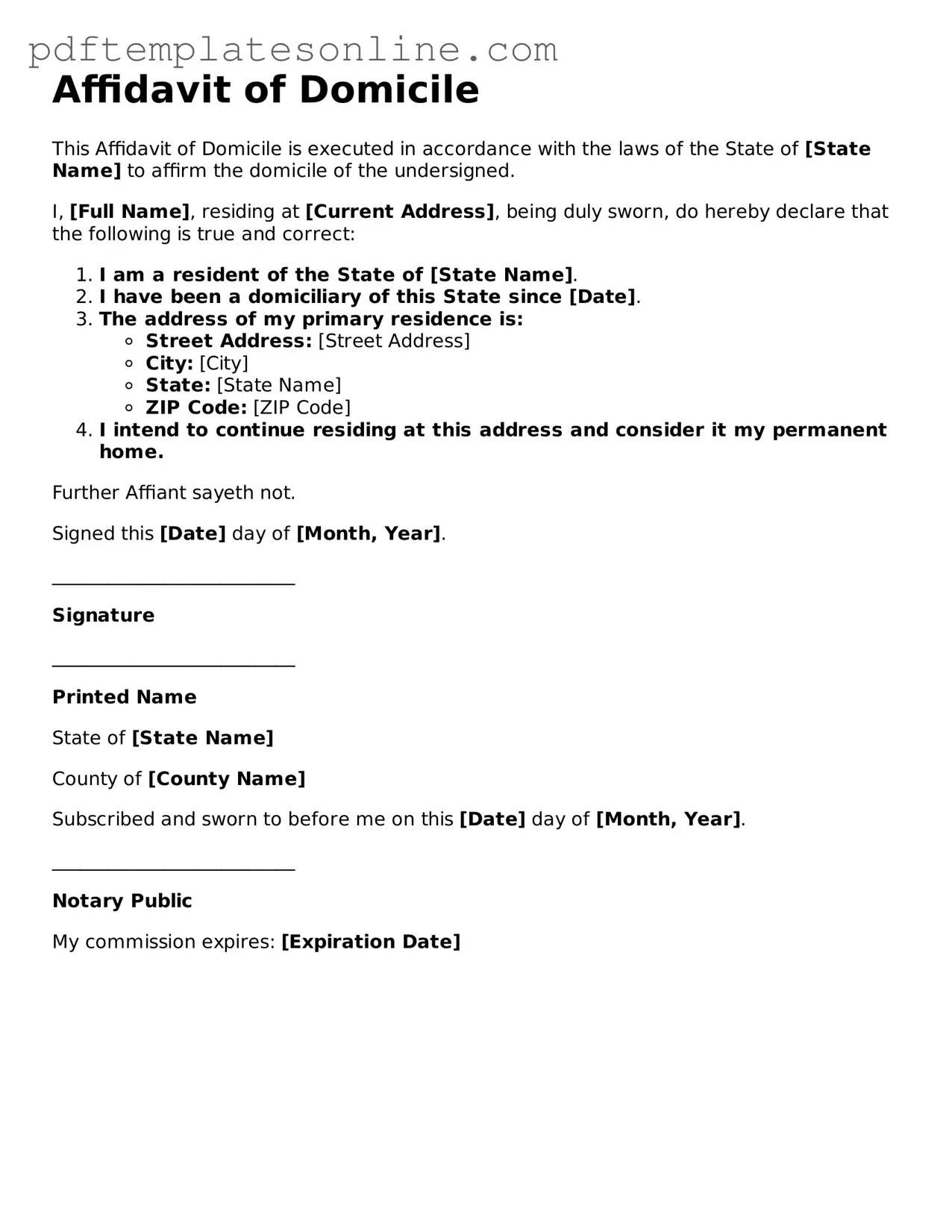Filling out the Affidavit of Domicile form can seem straightforward, but many people make critical mistakes that can lead to delays or complications. One common error is failing to provide accurate information about residency. This form is designed to establish where a person resides, and inaccuracies can create legal issues. Always double-check your address and ensure it reflects your current living situation.
Another frequent mistake is neglecting to include all necessary signatures. The affidavit often requires signatures from witnesses or co-signers. If these signatures are missing, the document may be deemed invalid. Make sure to read the instructions carefully and obtain all required signatures before submitting the form.
Some individuals overlook the importance of dating the affidavit. A date provides context for the information provided and can be crucial in legal proceedings. Without a date, the affidavit may not be considered valid. Always include the date when you sign the document.
People often forget to notarize the Affidavit of Domicile. Notarization adds an extra layer of authenticity and is often a requirement for the document to be accepted. Ensure that you take the affidavit to a notary public before submission to avoid any issues.
Another mistake is using outdated forms. Legal documents can change, and using an older version of the Affidavit of Domicile may result in rejection. Always check for the most current version of the form on the appropriate website or consult with a legal professional.
In some cases, individuals fail to provide supporting documentation. While the affidavit itself is essential, additional documents may be necessary to substantiate claims about residency. This could include utility bills or tax records. Gather all relevant documents to strengthen your application.
Lastly, many people do not keep a copy of the completed affidavit. Once submitted, having a copy for your records is vital. It can serve as proof of your residency and may be needed for future legal matters. Always make a copy before you send it off.
